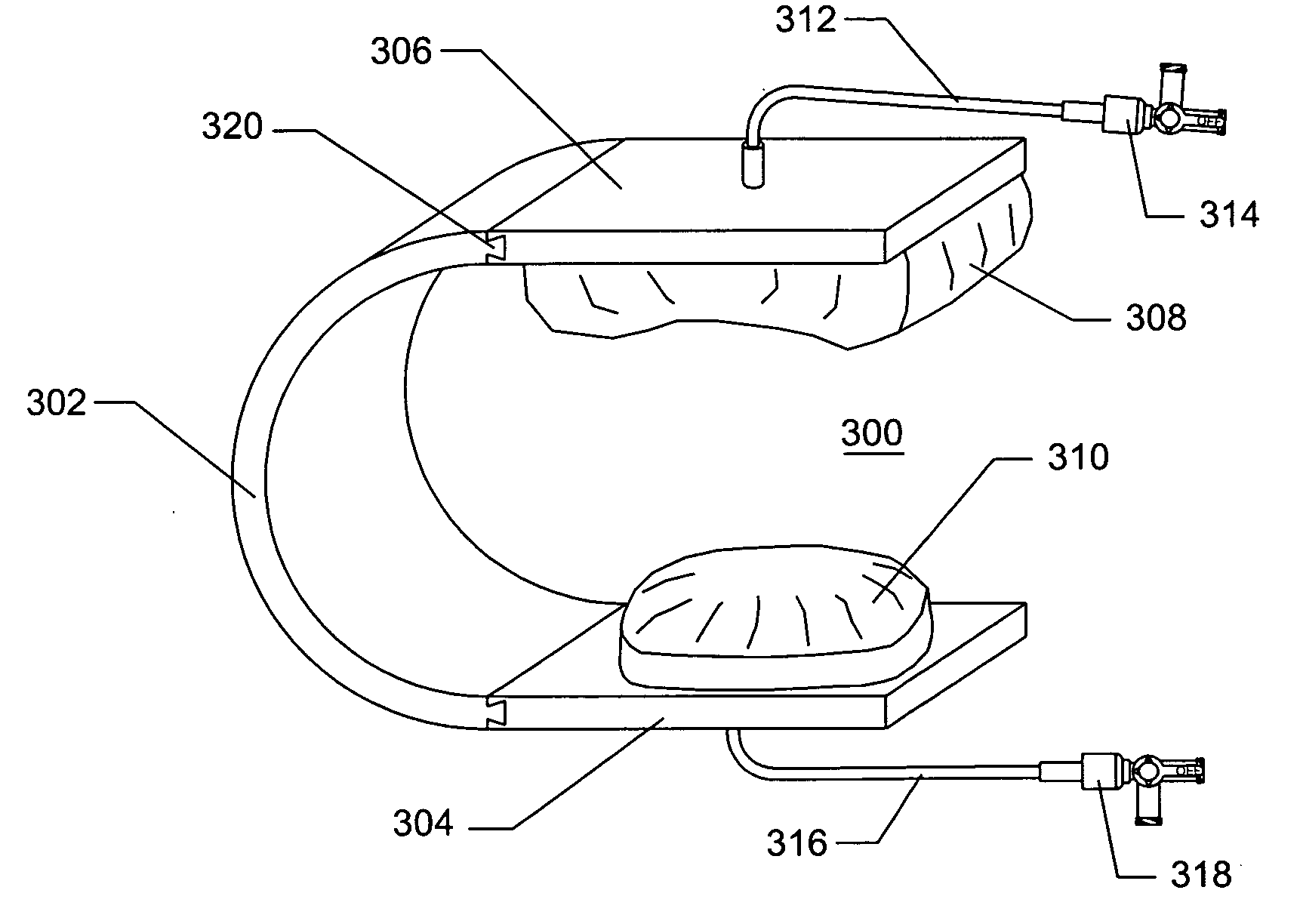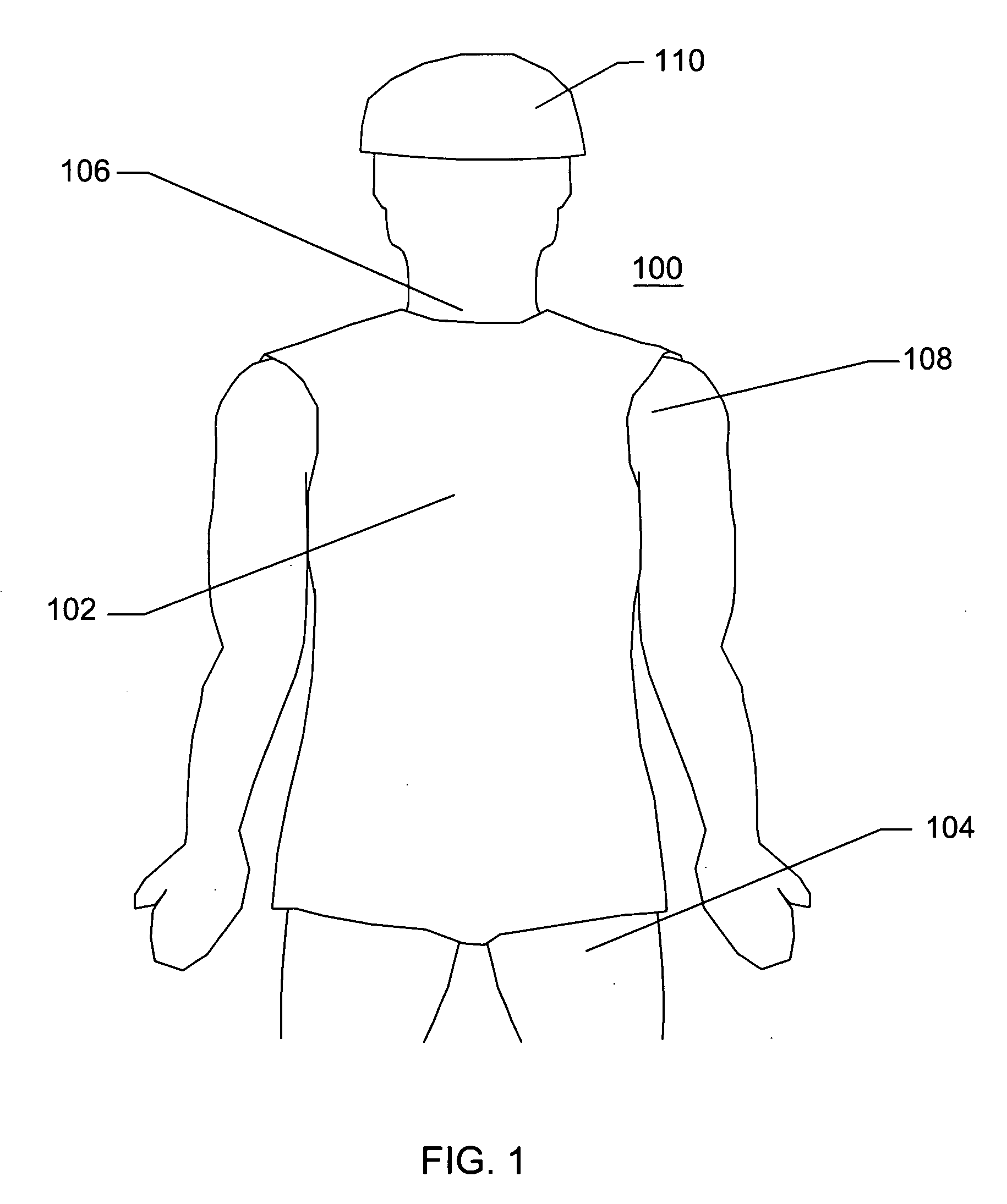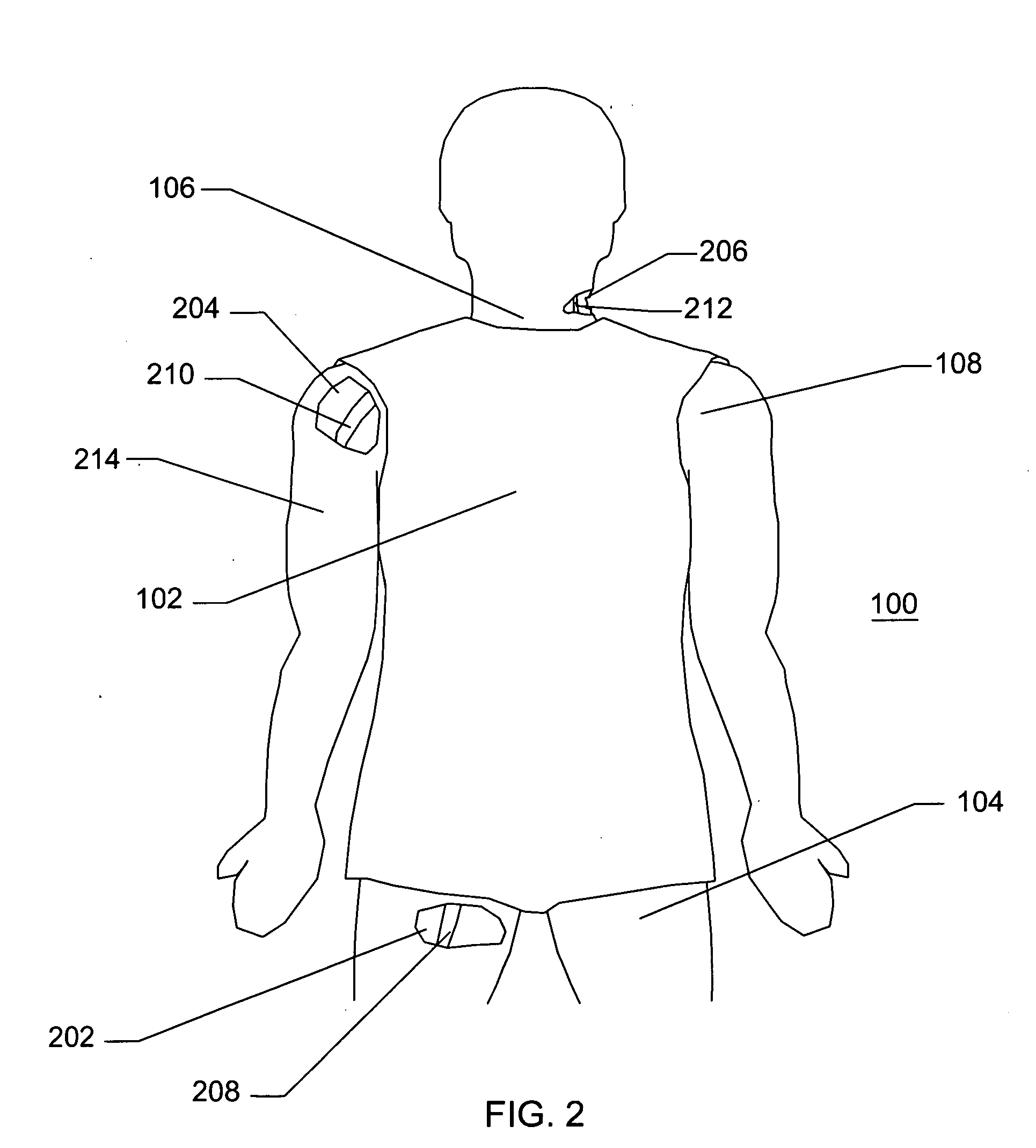Surgical packing devices
a surgical and packing device technology, applied in the field of wound care, can solve the problems of not being able to completely wrap a bandage around the patient, increasing the volume of the structure, and not being able to make it easy to transport, so as to achieve the effect of substantially reducing or preventing blood loss from the wound
- Summary
- Abstract
- Description
- Claims
- Application Information
AI Technical Summary
Benefits of technology
Problems solved by technology
Method used
Image
Examples
Embodiment Construction
[0024]The present invention may be embodied in other specific forms without departing from its spirit or essential characteristics. The described embodiments are to be considered in all respects only as illustrative and not restrictive. The scope of the invention is therefore indicated by the appended claims rather than the foregoing description. All changes that come within the meaning and range of equivalency of the claims are to be embraced within their scope.
[0025]FIG. 1 illustrates a front view of a patient 100, looking posteriorly, wherein the patient 100 is wearing a protective vest 102 over their torso and a helmet 110 on their head. The patient 100 further comprises a shoulder 108, a groin 104, and a neck 106.
[0026]Referring to FIG. 1, the patient 100 is shown with protective gear similar to that used by military personnel. Other garments are not shown for simplicity. The protective vest 102 does not extend significantly over the groin area 104, the neck 106, or the shoulde...
PUM
 Login to View More
Login to View More Abstract
Description
Claims
Application Information
 Login to View More
Login to View More - R&D
- Intellectual Property
- Life Sciences
- Materials
- Tech Scout
- Unparalleled Data Quality
- Higher Quality Content
- 60% Fewer Hallucinations
Browse by: Latest US Patents, China's latest patents, Technical Efficacy Thesaurus, Application Domain, Technology Topic, Popular Technical Reports.
© 2025 PatSnap. All rights reserved.Legal|Privacy policy|Modern Slavery Act Transparency Statement|Sitemap|About US| Contact US: help@patsnap.com



